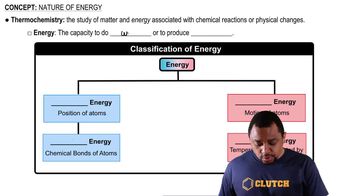Write a balanced equation for the synthesis of the 2–6 semiconductor ZnTe by chemical vapor deposition from dimethylzinc, Zn(CH3)2, and diethyltellurium, Te(CH2CH3)2, assuming that the other product is gaseous propane (CH3CH2CH3).
Considering only electronegativity, rank the LED semiconductors made of solid solutions in order of increasing bandgap energy. Al0.40Ga0.60As, Al0.25Ga0.75As, Al0.05Ga0.95As
 Verified step by step guidance
Verified step by step guidance
Verified Solution
Key Concepts
Electronegativity

Bandgap Energy

Solid Solutions in Semiconductors

A photovoltaic cell contains a p–n junction that converts solar light to electricity. (a) Silicon semiconductors with a band-gap energy of 107 kJ/mol are commonly used to make photovoltaic cells. Calculate the wavelength that corresponds to the band-gap energy in silicon.
A photovoltaic cell contains a p–n junction that that converts solar light to electricity. An optimum semiconductor would have its band-gap energy matched to the wavelength of maximum solar intensity at the Earth's surface. (a) What is the color and approximate wavelength of maximum solar intensity at the Earth's surface? Refer to the figure for Problem 12.102.
A photovoltaic cell contains a p–n junction that that converts solar light to electricity. An optimum semiconductor would have its band-gap energy matched to the wavelength of maximum solar intensity at the Earth's surface. (b) Which of the following semiconductors absorb at a wavelength matched with maximum solar intensity? CdTe with a band-gap energy of 145 kJ/mol or ZnSe with a band-gap energy of 248 kJ/mol.
